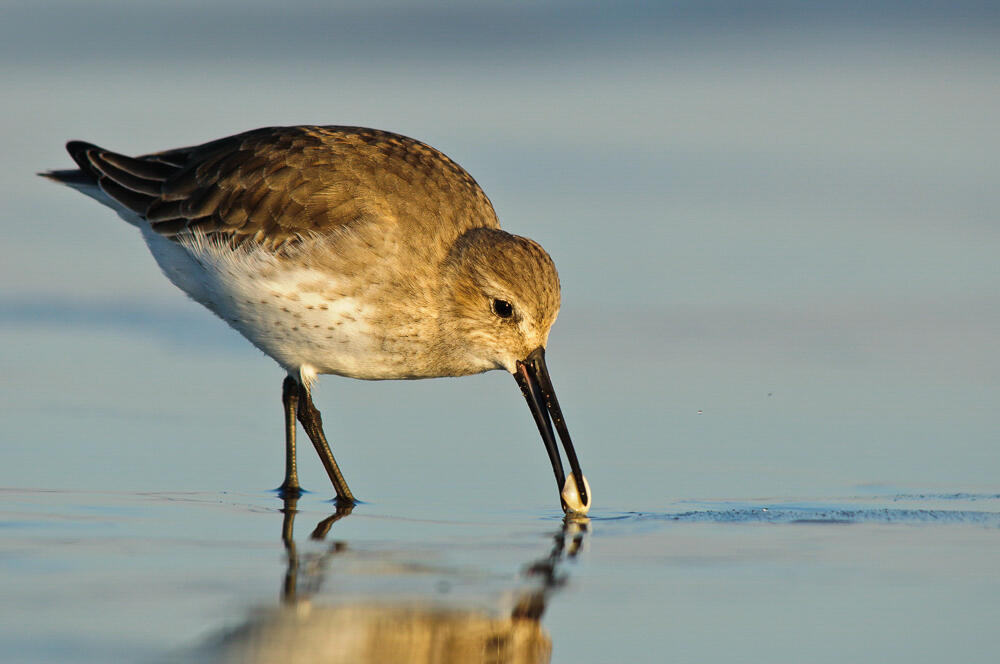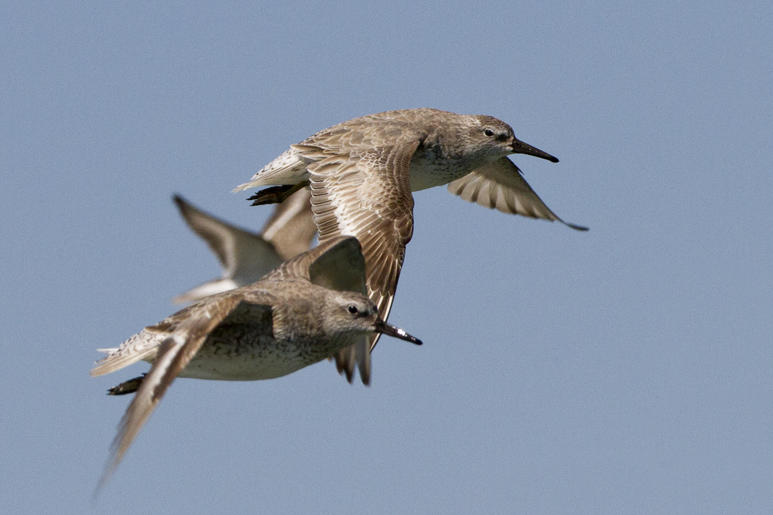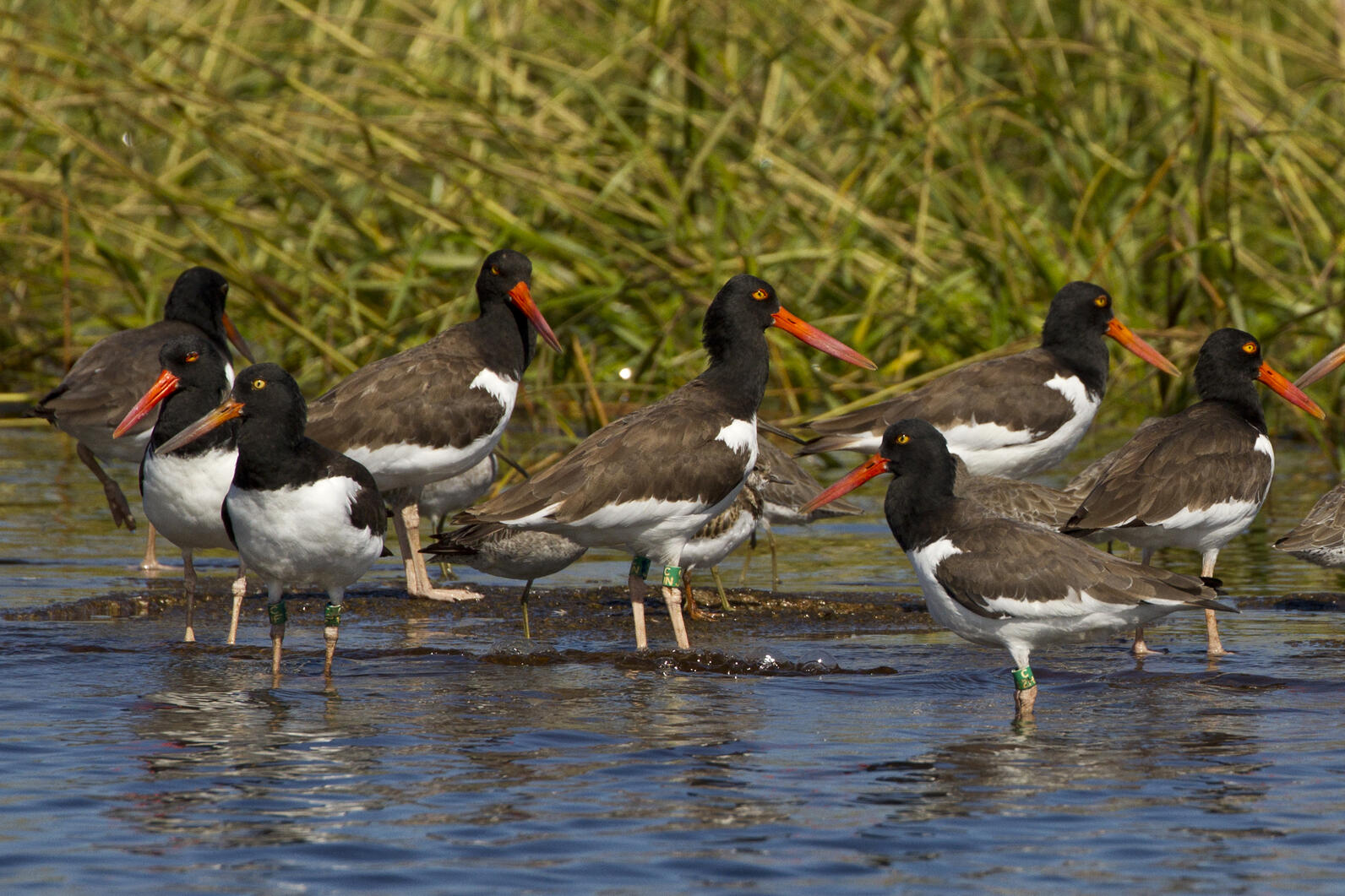It may still feel like peak summer but North Carolina’s coastal birds are beginning to move south in preparation for the change in seasons. While August brings bird migration departures, many new arrivals are starting to appear along our coast. So, grab your binoculars and take a trip over to the beach to see your favorite birds.
With nesting season wrapping up, it’s important to remember the ways you can continue to help birds along our coast. First, some species like Black Skimmers and Brown Pelicans can continue to raise chicks well into September, so continue to respect signs and posted areas. Second, migrating birds needs to save their energy for long flights, so maintain your distance by walking around foraging or resting flocks, keep dogs on a leash and away from birdy areas, and teach children not to chase birds. Finally, if you see any birds with bands, report your sightings to the U.S. Geological Survey’s Bird Banding Lab.
Arriving:
Sanderling
These small, active birds can be spotted at any beach in North Carolina running back and forth in the surf, probing the sand like tiny sewing machines. They begin to arrive in July, like many Arctic-nesting shorebirds, and spend the next month or two molting out of their bright orangey-black breeding plumage into the sand-colored winter garb that matches their beachy homes. If you stop and watch, you may notice that they sometimes guard a foraging area from other Sanderlings, tucking their heads and charging at intruders.
Dunlin
One of the coast’s newest additions come October will be the droop-billed Dunlin. A late arrival on the coast, most Dunlin leave their high Artic nesting grounds to stage around Hudson and James Bays. While there, they molt out of their bright winter plumage into the gray-brown that give them their name. It’s this stop that delays their arrival in our state. Its populations will peak over the winter at inlets across the North Carolina coast and by early May most will be northbound again.

Black-bellied Plover
The distinct whistles of the Black-bellied Plover can be heard at coastal inlets starting in July. When they arrive, they may still be in their breeding plumage that resembles a reverse tuxedo—hence their name. As fall progresses, they will don more subtle, but still beautiful, winter dress that blends in better with sand flats where they roost and forage. They are especially shy, and flush easily if you approach to closely, so take extra care when observing them.
Western Sandpiper
The Western Sandpiper can be spotted in the fall at coastal inlets and on sandbars and mudflats. Their numbers in North Carolina are usually greatest between September and October when migrating flocks are passing through, but some will stay overwinter. Early migrants will still sport black speckles on the sides of their bellies and rufous backs, remnants of their breeding plumage. Later in the year, they will be as dun-colored as the Dunlin.
Red Knot

Though they are more numerous during spring migration, the canny birdwatcher can still spot Red Knots on the North Carolina coast beginning in August as they pass through at places like Fort Fisher State Recreation Area, Cape Point at Cape Hatteras National Seashore, and Cape Lookout National Seashore. Small flocks will stay for the winter, but don’t expect to see their red bellies, not until the spring when they molt into breeding plumage. Knots often forage on ocean-facing beaches and, like the Black-bellied Plovers, can spook easily.
Departing:
Royal Tern
With shaggy black crowns on their heads, Royal Terns stand out at the inlets of North Carolina, especially in August and September. They leave their nesting kingdoms to migrate to Florida, the Caribbean and South America in October, to avoid North Carolina's chilly winters. Watch for begging behavior from this year’s chicks as they continue to solicit attention from their parents by hunching up their necks and cheeping insistently.
Black Skimmers
Black Skimmers are known for their large, orange bills and acrobatic flight. Beginning in August, they can be found at many inlets along the North Carolina coast, including Mason Inlet, Tubbs Inlet, and Beaufort Inlet. Over the fall, flocks grow to well over 1,000. Around Thanksgiving many depart for points south, but recently more have been found staying in-state all winter, extending the viewing season.
Wilson’s Plover
In September, North Carolina coastal inlets will be losing Wilson's Plover to Florida and South America for its winter migration. These large-billed plovers are solitary nesters, but during migration they will gather in flocks of 50 or more. Most are gone by early October.
Arriving and Departing:
The American Oystercatcher

The large, long-beaked and chicken-legged American Oystercatcher is hard to miss. Some of North Carolina’s nesting oystercatchers are residents, meaning they don’t migrate, while others will be heading south in early fall. Meanwhile, others will be arriving from northern states. Starting in August, both residents and migrants begin to gather in flocks that can be found around the coast, at such birding hotspots as Rachel Carson Reserve, the rocks at Fort Fisher, and Masonboro Island.
Piping Plover
This small, pale shorebird with an adorably stubby beak is found year-round at North Carolina's beaches and inlets. In the fall, though, migrating flocks boost numbers, especially at places like the south end of Ocracoke Island, Rich Inlet, and Sunset Beach.
When you are out spotting this season, always remember to share the beach. Learn how Audubon North Carolina is working to protect our coastal birds all year-round and if you see any birds with bands, report your sightings to the U.S. Geological Survey’s Bird Banding Lab.










